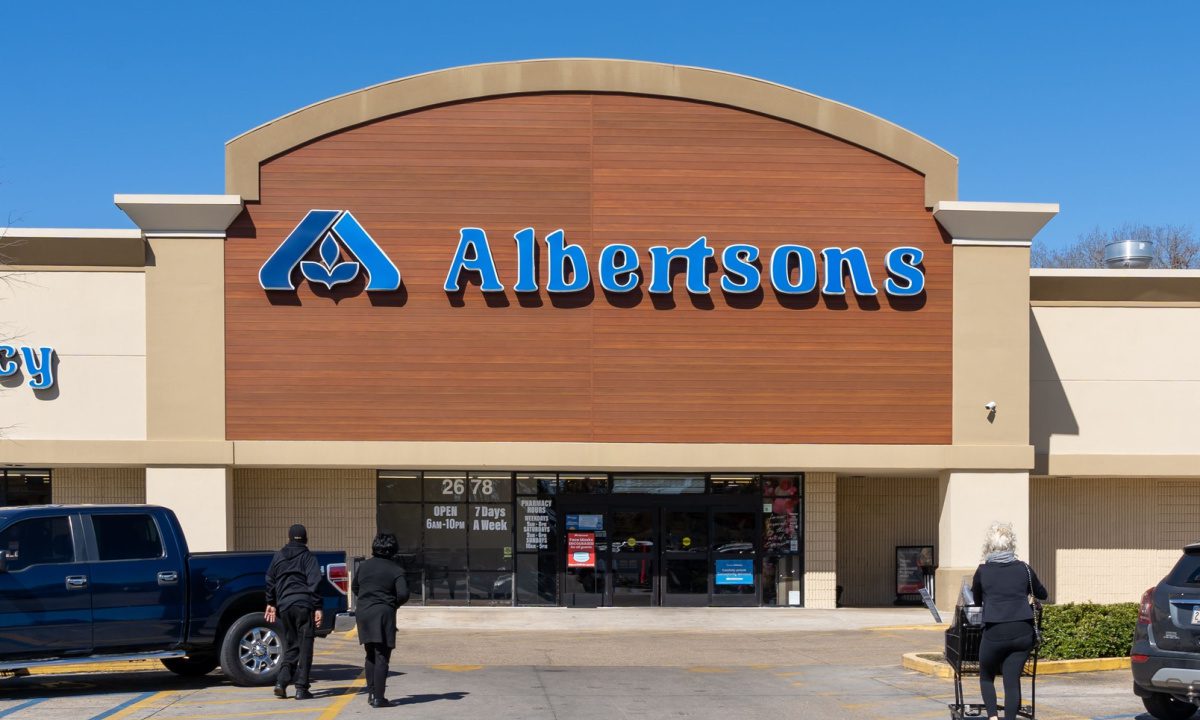
As inflationary pressures threaten grocery shopper loyalty, Albertsons is deepening its digital relationships with customers.
The grocery giant, which spans nearly 2,300 locations across 34 states and D.C., said in its fourth-quarter FY2023 financial report Tuesday (April 11) that its digital sales continue to grow by double digits as the company expands its tech capabilities, reaching 16% year over year digital growth for the quarter and 28% for the year.
“We are pleased with our fourth quarter financial results and the suite of capabilities we continue to build in our business,” CEO Vivek Sankaran said in a statement. “We invested in … digitally connecting and engaging our customers through a frictionless omnichannel experience, differentiating our store experience [and] enhancing what we offer and where we offer it.”
Contributing to these digital gains are the grocer’s efforts to drive loyalty program adoption, with its rewards membership base growing 15% year over year in the quarter to 34 million.
These digital relationships and the ability to offer targeted deals and discounts are key, as rising prices compromise grocery shopper loyalty.
According to data from the October edition of PYMNTS’ Consumer Inflation Sentiment study, “Consumer Inflation Sentiment: Consumers Buckle Down On Belt-Tightening,” which draws from a survey of more than 2,600 U.S. consumers in September, 47% are switching to cheaper grocery merchants.
“As we look ahead to fiscal 2023, we believe we are well-positioned to drive top-line growth by deepening relationships with our customers even as inflation continues,” Sankaran said in a news release.
These relationships are key to securing the continued of the nearly two-thirds of consumers who weigh their loyalty to merchants when deciding where to shop.
Research from the latest Consumer Inflation Sentiment report, “Consumer Inflation Sentiment: The False Appeal of Deal-Chasing Consumers,” which draws from a survey of more than 2,100 United States consumers, revealed that only 17% of grocery shoppers are loyal to their preferred merchants, while 44% of grocery shoppers are deal chasers, willing to go wherever they will get the best price, and 38% are “persuadables,” who value a good price but also consider convenience and brand loyalty.
Notably, to reach those persuadable customers, it is key for grocers to focus not just on the deals they have to offer but also the convenience they can provide — the study found that persuadables rank ease and convenience above all other factors as most influential on their decision of where to buy groceries.
Indeed, Albertsons has been looking to boost its ability to offer convenience. In the quarter, the retailer launched its Sincerely Health platform, aiming to position itself at the center of consumers’ wellness routines, seamlessly integrating its grocery and pharmacy offerings into their overall health activities.
Overall, digital engagement with grocers is on the rise. Findings from PYMNTS’ study “Changes in Grocery Shopping Habits and Perception,” which drew from a December survey of more than 2,400 U.S. consumers, revealed that nearly half of consumers (45%) now shop for groceries online at least some of the time.